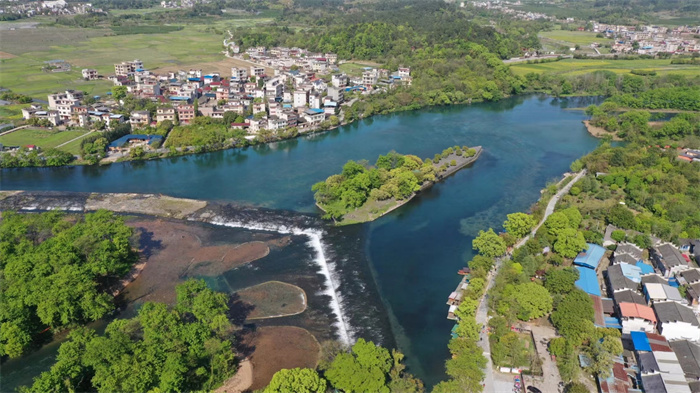In full flow

An aerial view of Lingqu Canal, which dates back to the Qin Dynasty (221-206 BC). The man-made waterway is a pioneering hydraulic and navigational feat, helping the economic and social development of surrounding areas. FU HONGYUAN/FOR CHINA DAILY
Ancient waterway poised to tap deep heritage channeling tradition with innovation toward sustainable future, Alexis Hooi and Zhang Li report in Guilin, Guangxi.
Ask Ji Zhenyong to pick his favorite spot in town and he will point immediately to the weathered stone walkways next to the water's edge.
"The canal is linked deeply to our history and heritage here, you can say it runs in our blood," he said.
Ji, 54, is a resident of Xing'an county in Guilin, South China's Guangxi Zhuang autonomous region. He is also the 17th generation of doujun — traditional weir and water lock sentinels charged with guarding and maintaining the Lingqu Canal, an ancient waterway built 2,200 years ago when the country was first unified.
"We've been so much a part of Lingqu, looking after it," Ji said. "Of course, we don't actually guard it now in modern times, but it's still our role as responsible residents to help keep it flowing steadily and smoothly, through a healthy, clean and sustainable environment."
Ji's sense of duty reflects the latest efforts to preserve and promote Lingqu's physical, cultural and social value — the man-made waterway is the first of its kind, a pioneering hydraulic, navigational feat stretching 36.4 kilometers through four major towns as it links the Xiang and Lijiang rivers and, by extension, the major Yangtze and Pearl river basins.
The International Commission on Irrigation and Drainage recognizes Lingqu Canal as a World Heritage Irrigation Structure, "an exquisite illustration of Chinese technical and engineering capabilities ... helping the economic and social development of rural areas".
Lingqu is also on the UNESCO World Heritage tentative list, being considered for nomination as a site of outstanding universal value.
According to the UNESCO citation, the canal is lauded as a model of early canals that reflects the "Asian hydraulic and navigation technology of ancient civilization".It "integrates navigation, irrigation and flood control functions and is an outstanding example of comprehensive, sustainable and effective use of natural resources in traditional Chinese agricultural society", helping to maintain stability in the south of a unified country.














